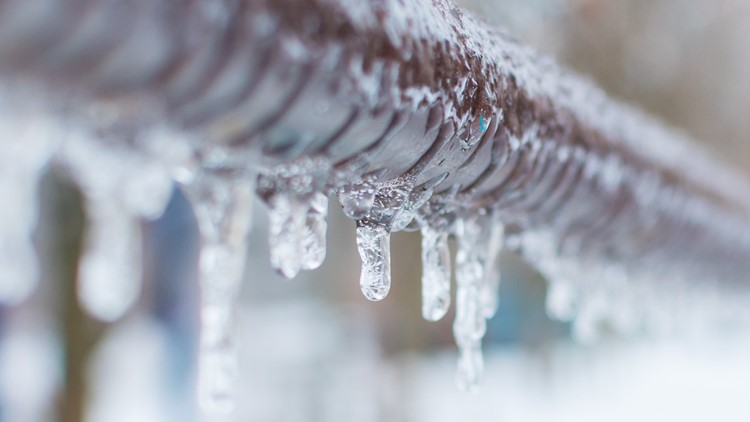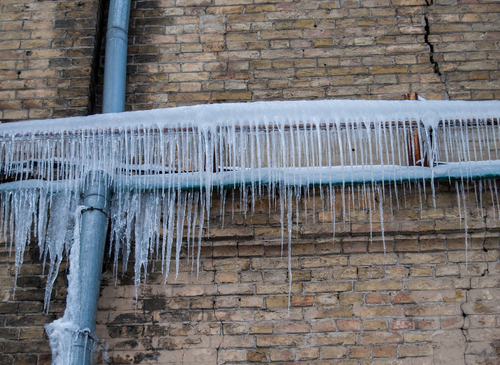Here underneath yow will discover more great data relating to Helpful Tips to Prevent Frozen Pipes this Winter.

Cold weather can wreak havoc on your pipes, particularly by freezing pipelines. Here's how to prevent it from taking place and what to do if it does.
Intro
As temperature levels drop, the risk of frozen pipes rises, possibly causing costly repairs and water damages. Comprehending how to avoid frozen pipelines is important for property owners in cool climates.
Understanding Icy Pipes
What triggers pipelines to freeze?
Pipelines freeze when revealed to temperatures listed below 32 ° F (0 ° C) for prolonged durations. As water inside the pipes ices up, it increases, putting pressure on the pipeline wall surfaces and potentially triggering them to break.
Risks and problems
Frozen pipes can cause water supply interruptions, building damage, and expensive repairs. Burst pipes can flooding homes and create considerable structural damage.
Signs of Frozen Pipeline
Determining frozen pipes early can avoid them from rupturing.
Exactly how to determine frozen pipes
Search for reduced water circulation from faucets, unusual odors or sounds from pipelines, and noticeable frost on subjected pipes.
Prevention Tips
Insulating at risk pipelines
Cover pipelines in insulation sleeves or utilize heat tape to shield them from freezing temperature levels. Focus on pipes in unheated or external areas of the home.
Home heating methods
Keep interior areas effectively heated, specifically locations with plumbing. Open up cabinet doors to permit warm air to flow around pipes under sinks.
Shielding Outside Pipes
Garden tubes and outdoor taps
Disconnect and drain pipes yard pipes before wintertime. Mount frost-proof spigots or cover outside taps with insulated caps.
What to Do If Your Pipelines Freeze
Immediate activities to take
If you suspect frozen pipelines, maintain faucets open to eliminate stress as the ice melts. Use a hairdryer or towels soaked in warm water to thaw pipelines gradually.
Long-Term Solutions
Architectural adjustments
Consider rerouting pipelines far from outside wall surfaces or unheated locations. Include added insulation to attic rooms, cellars, and crawl spaces.
Updating insulation
Buy high-quality insulation for pipes, attic rooms, and wall surfaces. Proper insulation helps maintain regular temperature levels and reduces the risk of icy pipelines.
Verdict
Stopping frozen pipes requires proactive measures and fast actions. By comprehending the causes, indicators, and safety nets, homeowners can shield their pipes during winter.
6 Proven Ways to Prevent Frozen Pipes and Protect Your Home
Disconnect and Drain Garden Hoses
Before winter arrives, start by disconnecting your garden hoses and draining any remaining water. Close the shut-off valves that supply outdoor hose bibs and leave the outdoor faucet open to allow any residual water to drain. For extra protection, consider using faucet covers throughout the colder months. It’s also important to drain water from any sprinkler supply lines following the manufacturer’s directions.
Insulate Exposed Pipes
Insulating your pipes is an effective way to prevent freezing. Pipe insulation is readily available at home improvement stores and is relatively inexpensive. Pay close attention to pipes in unheated areas such as the attic, basement, crawl spaces, or garage. Apply foam insulation generously to create a buffer against the cold. You can also wrap your pipes in heat tape or thermostat-controlled heat cables for added warmth.
Seal Air Leaks
Inspect your home for any cracks or openings that could let in cold air. Seal any holes around the piping in interior or exterior walls, as well as the sill plates where your home rests on its foundation. Additionally, make sure to keep your garage door closed unless you’re entering or exiting. Leaving it open creates a significant air leak that can lead to frozen pipes.
Allow Warm Air Circulation
During cold snaps, it’s essential to allow warm air to circulate evenly throughout your home. Leave interior doors ajar to promote better airflow. Open kitchen and bathroom cabinets to help distribute heat consistently around the rooms. If you have small children or pets, be sure to remove any household chemicals or potentially harmful cleaners from open cabinets for safety.
Let Faucets Drip
A small trickle of water can make a big difference in preventing ice formation inside your pipes. When temperatures drop significantly, start a drip of water from all faucets served by exposed pipes. This continuous flow helps prevent the water from freezing. Additionally, running a few faucets slightly can relieve pressure inside the pipes, reducing the chances of a rupture if the water inside does freeze.
https://choateshvac.com/6-proven-ways-to-prevent-frozen-pipes-and-protect-your-home/

I was shown that report about Preventing and dealing with frozen pipes from a pal on another web property. Do you know about someone else who is occupied with the niche? Be sure share it. Thank-you for going through it.
Call Today